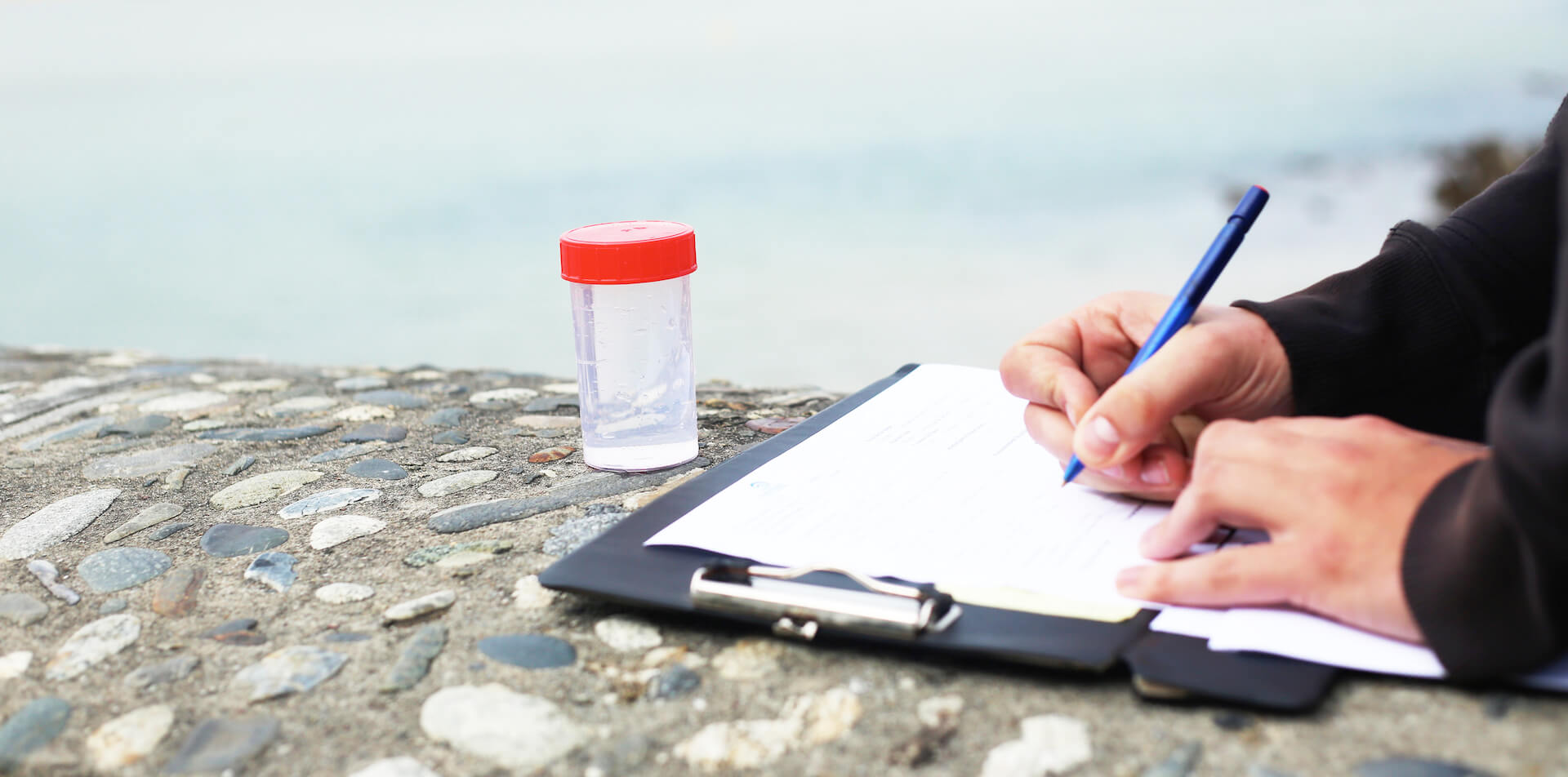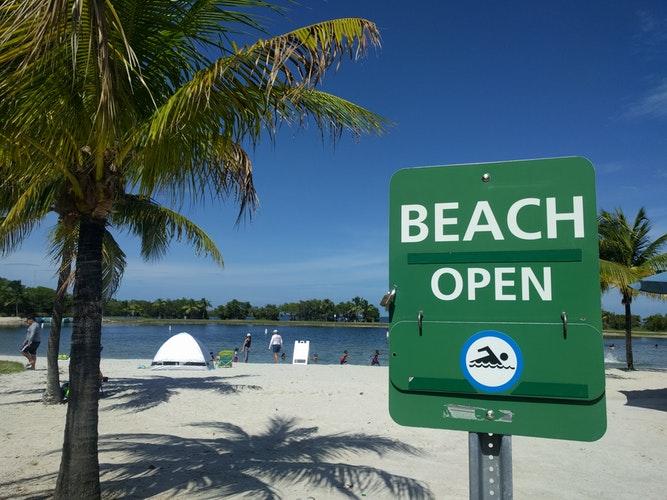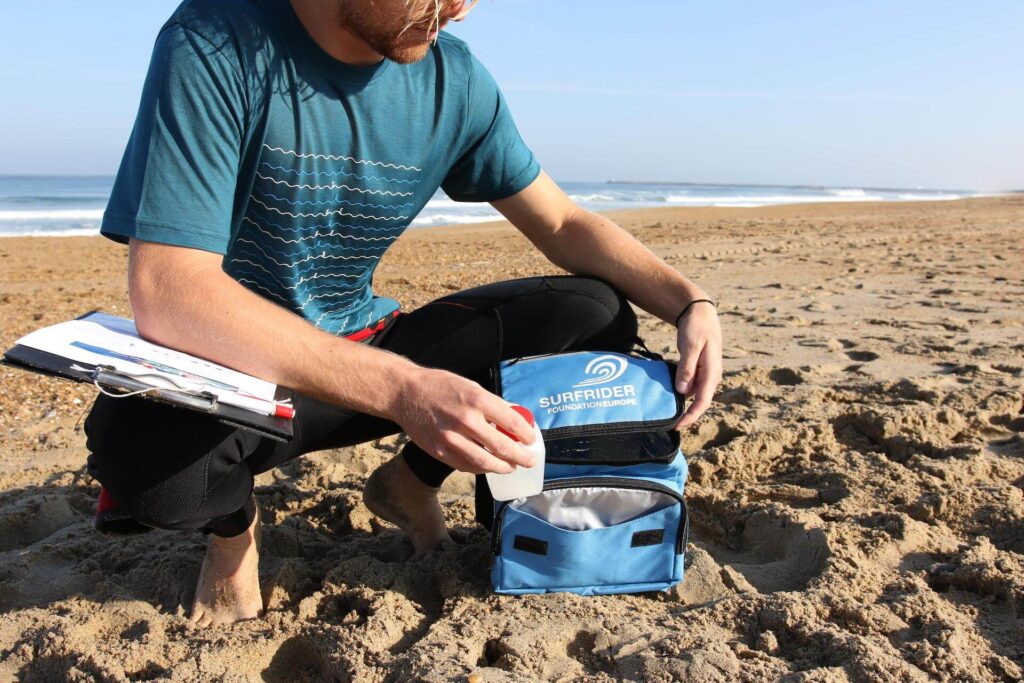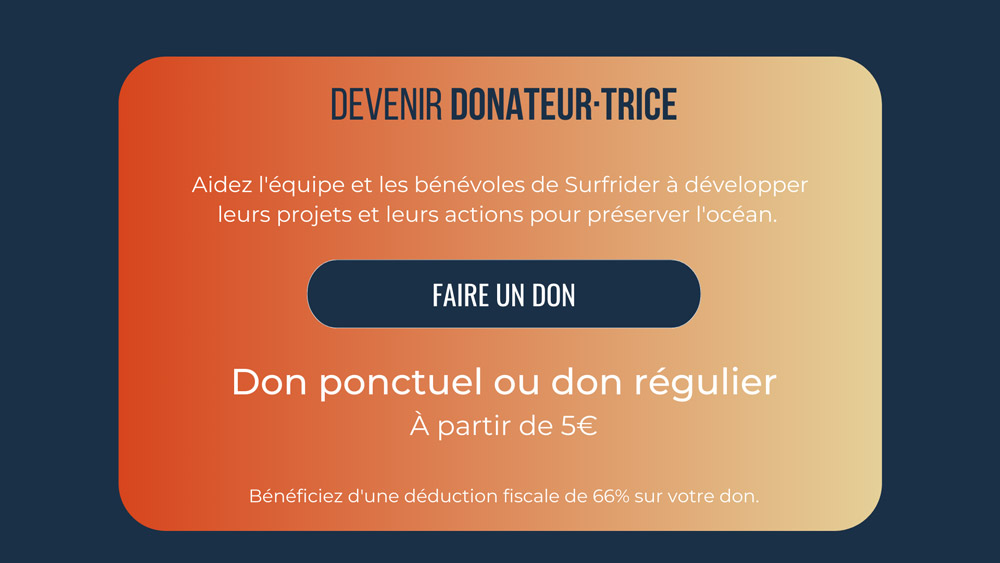Bacteriology
Surfrider Europe has developed laboratory research over the course of many years in the field of bathing water treatment. Thanks to regular analyses carried out locally, researchers have been able to accurately monitor changes in water quality. Today, all of these research results contribute to Surfrider Europe's goal of making them more accessible to users and standardised across Europe.
A regulated scientific protocol
In order to relay information on the quality of coastal water all year round, Surfrider Foundation Europe has implemented complementary monitoring of water in activity areas on the coasts of French regions Nouvelle Aquitaine and PACA.
Surfrider introduced these analyses targeting busy water activity areas in the early 2000s, and base their protocol and concentration thresholds on European Directive 2006/7/EC concerning the management of bathing water quality. Under Surfrider’s supervision, volunteers collect water samples for subsequent monitoring.

The crucial role of information
In the summertime, coastal water quality is a subject of particular interest as it can influence the choice of a holiday destination.
For EU Member States, it can be used as leverage to promote tourism and the attractiveness of a country.
The nature of the information given to users is regulated, but not its format, varying from one local authority to another. How is one to decide in this maze of data?

Understanding the data
The 2006 European Directive on bathing waters only requires two bacteriological parameters to be monitored: Escherichia coli and intestinal enterococci. Both of these bacteria indicate faecal contamination of a water body. As they are naturally found in human and animal digestive systems, they signify the likely presence of other pathogenic germs. The higher the concentration of Escherichia coli and intestinal enterococci, the higher the health risk.
In France, although monitoring costs are covered by communes, regional health agencies (ARS) are the ones that determine frequency and commission laboratories to lead sampling campaigns. The results of such occasional samplings are available at each bathing site concerned, often at the lifeguard’s station, and at the city hall or on the internet.
The bacteriological analyses conducted by the ARS, along with forecast models, facilitate decision-making by allowing the risk of water pollution to be evaluated throughout the day. Whenever necessary, the mayor, who is responsible for bathing waters in his commune, can draft an order prohibiting bathing and all other water activities in the monitored area.


